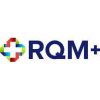“Software used in production or the quality system, whether it be in the designing, manufacturing, distributing, or tracing, must be validated.”1
When FDA added this statement to the Medical Devices Current Good Manufacturing Practice (CGMP) Final Rule, Quality System Regulation, it had an unintended consequence: Industry began validating computer systems to death!
At the 21st Year, CSV Has Come of Age…
On May 15, 21 years after the start of the CSV (computer systems validation) cold war, FDA and industry metaphorically declared that it is time to stop validating computer systems to death. (The Final Rule became effective on June 1, 1997.)
At a recent Siemens PLM Industry event, hosted by Medtronic at their operational HQ in Minneapolis, MN, FDA and industry took another important step in shifting the paradigm from compliance to quality.
According to FDA’s Francisco (Cisco) Vicenty, program manager, case for quality at FDA’s CDRH, “the medtech industry’s high focus on meeting regulatory requirements versus adopting best quality practices has the potential to increase risk to patients. This compliance-centric approach has resulted in quality issues and has hampered innovation in manufacturing and product development practices. Additionally, this single-mindedness has led to low rates of investment in automation and digital technologies.”2
Validation is an Obstacle to Implementing Technology
CSV has been a significant obstacle to the implementation of automation and digital technologies in our industry. This is due to a lack of clarity on the FDA’s part on CSV expectations for automation and technology systems. The agency recognizes CSV is a barrier to implementation and is working swiftly on addressing this.
In a recent interview with Axendia, the FDA discussed how Validation is an Obstacle to Implementing Technology in MedTech. Our research research shows that validation costs range between 1 and 1.5 the cost of implementation of software used to support production, automation and quality systems. This model is not sustainable!
To streamline and improve non-product computer system validation, industry launched a shared effort with FDA to identify causes of misperceptions, to clarify, and to promote the best practices.
Analysis of the issue shows that:
- Medical device industry lags in implementation of automated systems and new technologies due to lack of clarity, outdated compliance approaches and perceived regulatory burden.
- This reduces a firm’s capability to learn, react to issues and improve product quality.
The vision to achieve a new mindset:
- Drive a paradigm shift in applying value-driven and patient-focused approaches to streamline non-product software CSV.
- Use critical thinking and risk-based agile approaches to streamline assurance activity and evidence capture.
The plan to meet these objectives:
- Develop streamlined practice recommendations and pilots.
- Modifications to the 820.70(i) and 820.50 regulatory language.
- Guidance development centered on this software category.
The benefits of this approach to CSV have been proven through a series of medtech industry pilots. A number of leading medical device companies, including Boston Scientific, Medtronic and ZOLL LifeVest presented first-hand real savings from real case studies based on their use of this mature approach to CSV. According to the FDA-Industry CSV Team’s analysis, shifting to AGILE Ad-hoc/Unscripted Testing (AGILE) a $10-billion firm with 100 systems could save $1.62 million annually, which can be reinvested in innovation and quality improvement (assumes 14 hours per test script vs. 2 hours with Agile approach).
| Non-Product CSV Modification Impact | |||
| Activity | Current Approach | Modified Approach | Impact |
| Streamlined Analytics Reporting | Consumes 43 hours per report | Reduced to 10.5 hours per report |
|
| Risk-based software vendor qualification | ~2000 hours of labor | 80% reduction in labor |
|
| Ad-hoc/unscripted testing (AGILE) | 14 hours per test script | 2 hours |
|
| Source: FDA, a collaborative FDA and Industry Perspective: Automation + Non-Product CSV, Cisco Vicenty, Program Manager, case for quality, FDA CDRH OC, Siemens PLM-Medtronic Excellence Event, May 15, 2018, Minneapolis, MN | |||
A new Era for Computer System Validation…
CSV has come of age at a time when it is needed most. As medical device manufacturers deal with increasing product complexity to support improved patient outcomes, they must:
- Implement automation and digital technologies to support improved product quality
- Eliminate documentation redundancy
- Intelligently integrate information across the organization.
The complete brief can be accessed by visiting, “At 21, Computer System Validation Comes of Age”This will accelerate impact analyses to streamline and error proof design control.
Again, FDA recognizes that CSV has been a barrier to technology implementation and is working swiftly on addressing this issue.
FDA and industry have developed a streamlined approach that clearly shows that CSV should no longer an obstacle to implementing integrated digital technologies and automation processes.
Is your company ready to stop validating computer systems to death in favor of a mature CSV process?
References
- Medical Devices: Current Good Manufacturing Practices (CGMP) Final Rule; Quality Systems Regulation. (October 7, 1996). Food and Drug Administration. Retrieved from https://www.gpo.gov/fdsys/pkg/FR-1996-10-07/pdf/96-25720.pdf.
- Matlis, D. (2018). “What Is FDA Thinking? We Asked, They Answered!” Retrieved from http://axendia.com/blog/2018/02/14/what-is-fda-thinking-we-asked-they-answered/







